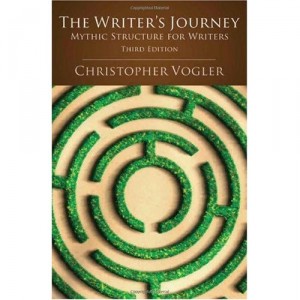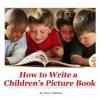I am facing a difficult revision, not because I don’t know what needs to be done or that I can’t do it. It’s just that I’m not sure I agree with the critiquer wholeheartedly.
A novel revision has all sorts of questions attached:
Who are you revising for? One certain reader/editor? To connect with readers better?
For yourself? To become a perfect model book?
The critique of the manuscript was thorough and opinionated. I liked that. Here are some of their thoughts, which just represent one opinion:
- The theme being too didactic and preachy.
- The structure seems off: a major plot point takes place at the midpoint, but the critiquer suggested it should be at the end of Act 1 instead. That would also take care of pacing problem in the first half of the novel. That would mean I need an totally new Act 2.
- Characterization needs to be beefed up.
- The story line includes a curse; once under the curse the main character has difficulty distinguishing reality from fiction. The critiquer says SHE had trouble keeping things straight, too.
All of this sounds reasonable to me, until I start to write. Then I realize that I put that major plot point midway through the novel for good structural reasons. If I cut a lot and move it to the end of Act 1, well, what will I do for Act 2. It means a totally new story.
Who am I revising for? A reader who has an opinion, but do I agree with that opinion?

I agree that the characterization needs work. No problem there.
I am revising for the reader to make this work better.
If the critiquer had problems keeping things straight, that is a valid reader-concern. Clarity should rule for the reader, even when the main character is totally confused. I agree. I will revise for the reader.
The main question remains: reorganize the Acts/structure of the story and write a totally new Act 2. Who am I revising for?

2013 GradeReading.NET Summer Reading Lists

Keep your students reading all summer! The lists for 2nd, 3rd and 4th, include 10 recommended fiction titles and 10 recommended nonfiction titles. Printed double-sided, these one-page flyers are perfect to hand out to students, teachers, or parents. Great for PTA meetings, have on hand in the library, or to send home with students for the summer. FREE Pdf or infographic jpeg.
See the Summer Lists Now!
The middle of a novel is one of the hardest places to plot. The set up is easy to imagine and the climax, of course, has to be exciting and emotional. But the sagging middle–how do you handle it?
The Hero’s Journey is one of the most useful of the 29 plot templates because it has such clearly defined stages.

The Writer's Journey by Christopher Vogler is a detailed explanation of the Hero's Journey.
The Hero’s journey handles the middle by starting with the idea that Act I is the normal world, but Act II is a new and different world and the main character’s job is to learn to deal with that world. For a romantic comedy, this might be the New World of courting a girl instead of using a girl. For a science fiction story, there is often an invented world with strange happenings and strange characters to negotiate. The New World just means that in contrast to the Normal World of Act I, something is new and difficult for the main character.
One of the strengths of something like the Hero’s Journey is that it suggests typical events that will happen in certain stages of a story. It’s not that these are required and they are generic events in any case. However, it helps to know what are suggested or typical.
One of the first things a character needs to learn is the rules of the New World. A typical scene is a watering hole, a place where characters of this New World gather and interact. For example, in the original Star Wars movie, Luke and ObiWan go into town and stop at a cantina. Here, we see a wide range of alien species, meet Han Solo and see how he handles what life throws at him, and pull back the curtain a bit on ObiWan’s powers. The function of the watering hole is a sort of orientation to the New World.
Another option is to focus on tests that the main character will encounter. What difficulties will the main character encounter in this brave New World? Our romantic hero finds it hard to figure out how to order flowers for his new sweetie. Or in the sff, the main character has learn to eat whatever gross things aliens eat–and enjoy it.
At the same time, our main character is making allies and enemies, figuring out the political climate, or the local gang, or just how to stay safe. In the Lord of the Rings, this is where Frodo and the gang pick up the Ranger as a guide toward Rivendell. While the main villain needs to be clear in Act I, there are henchmen, allies of the villain, or subplot villains who can surface here.
Next, the Hero’s Journey points toward the midpoint of Act II, the Supreme Ordeal. What is the blackest moment you can imagine for your character? (Stop being nice! You MUST make him/her face the worst case scenario!) This must be a personally impossible moment, not just something generally bad within the context of the story. It’s the moment of despair which will contrast with the triumph at the end of the story.
For our romantic hero, it’s likely the moment he realizes that he’s a jerk and will never be right for Sweetie Pie. Or, it might be when Sweetie Pie dates his best friend. The key is to find the emotional pain. Why does Romantic hurt? Because he sees himself repeating his father’s mistakes, pushing Sweetie Pie away with his cruel words. Can he move past the ghosts of his past and find a new way to live? Right now, it appears that he can’t. Revel in the pain, don’t make light of it. Let the despair play out across one or more scenes.
For our sff story, it may the realization that the character can’t go back to his home world and must live in this alien world the rest of his/her life. All the uncomfortable things of the alien world pile up in this Supreme Ordeal and the pain of loss and separation intensifies.
So, I skipped a stage of the Hero’s Journey called Approach to the Inmost Cave: this is because I don’t know what needs to go there until I know what Supreme Ordeal the character must face. When I am planning a story, I figure out the Supreme Ordeal, then go back and figure out what I need to write to set up that Ordeal. If Sweetie Pie is dating Romantic’s best friend, we need to see that relationship set up, creating the dreaded triangle relationship. Think about what needs to happen to make the Supreme Ordeal a true ordeal. Then, make it happen.
The character comes out of the Supreme Ordeal changed in some way: there is a resolve to do things different than Dad. There is a glimmer of an idea about how to get back home (or how to settle into the alien world as home).
Things aren’t smooth and easy after the Supreme Ordeal, but the character has changed in some way. S/he has a new way of approaching life. And indeed, at the climax of Act II, the character often wins in some way. The Hero’s Journey calls this the Reward or Seizing the Sword. There’s a hard-won confidence, a bright new determination, or a rescue of Sweetie Pie from Best Friend’s evil clutches. Sometimes, there is a physical reward: a doctor finds a cure, treasure is uncovered, or Sweetie Pie and Romantic have supper without fighting.
This isn’t the end of the story, there is still much to cover in Act III. Can this change be permanent or is it fleeting? Will this cure truly work on the population of New York City? Will the new confidence fall apart at the first sign of another suitor for Sweetie Pie? And when Dad comes to meet Sweetie Pie, will that destroy the relationship?
But it is a completion of Act II, the middle of the story. Thanks to the Hero’s Journey!

Using the 3-Act Structure: Adjusting Expectations
Most writers use a 3-act structure and for good reason. It works.
- Act 1:
25% of the length, sets up the story conflict and ends when the main character (MC) commits to doing something about the conflict.
- Act 2:
50% of the length, develops and deepens the conflict and ends when the main character begins to make a last, heroic effort to solve the problem.
- Act 3:
25% of length, is the last attempt to solve the problem and eventually ends in either success or failure (tragedy).

Top-heavy manuscripts fall over!
Looking at my WIP, I had structured it as a quest, which meant that Act 2 should begin at the point where MC crosses over into a new fantasy world. But that point was coming MUCH later, maybe half-way through the novel.
Somehow, in all the revisions, the structure has become top-heavy. Skimming those chapters or laying them out in a shrunken manuscript revealed that several scenes repeated; there was escalation with each repetition, so it wasn’t all bad. Still, I wondered if I could cut a considerable chunk from the first section.
Today, I cut 2000 words! Hurrah!
But, with a sinking feeling, I realized that it is still top-heavy. Could I stand to cut another 8000 words? Probably not. That would gut too much of the emotion and story.
Restructure the 3 Acts
The only answer then, is that I must restructure the story, must think about it differently, set it up differently. Fortunately, there are 29 plot variations or plot templates and at least three types of character arcs. Will one of those work?
As is, it’s set up as a quest: now in a quest, there should be character growth and often what the character sets out to discover is not what they need, not what they find. But it’s that definitely stepping into a “new world” that is bothering me in this story. The new world can’t be the fantasy world they find in the story because that now comes at about halfway through the story.
IF I consider this a story about maturation, and not a quest, then the current structure is very close. At page 21, out of 80 (single spaced, small font—just the way I like to work; I will reformat before I send it out), there is a first step of defiance of Father, a step into the world of adulthood, if you will. That’s about the 25% point and works perfectly. Likewise, the rest of the plot points fall into line.
Making this type shift is subtle: it’s not about the plot or actions, per se. Instead, it’s about setting up expectations in a reader’s mind. They intuitively understand this deep structure of dividing a story into acts, and subconsciously expect it to happen. If I set up the story, with subtle word changes, as a story of maturation, I think it will work. That crucial transition from Act 1 to Act 2 will be the move into the world of adulthood, of bei
Starting a new novel, I always try to look at the structure of the plot, but this time, I’m especially looking at character issues, since that’s my weakness.
A Story of XXX becomes a Story of ZZZ
It’s always that tricky second act that’s hard. The actions for the beginning and ending are easy, especially for the story I have in mind. But the second act is the place where characters confront each other and lives change. How to plan for that in the plot? How do you keep from having a sagging middle?
Often, there is a midpoint where a story totally shifts in a different direction. For example, in the movie “The Lion King”, there’s a dramatic shift. Act 1 is where the father is killed and Simba is left an orphan and runs away. Act 2/1st half he’s living the good life, “Acuna matata.” Then, his father talks to him from the stars and Simba realizes he must return home and face his evil uncle. A story of carefree living becomes a story of taking up his father’s mantle and leading his pack.

In the movie, “The Professional,” a teen’s family is murdered and a neighbor — who just happens to be a hit man — takes her in and protects her. The midpoint comes when these two unlikely characters realize they care for each other. A story of violence becomes a story of love.
The change isn’t always a 180 degree shift; sometimes, it’s a 90 degree shift. It just means that the character’s goals change somewhat because the character has changed.
Facing the Past
The midpoint often means facing something from your past. A secret is revealed. A character faces some guilt. A truth must be dealt with. It must cost the character something to turn in a different direction.
Sometimes the midpoint change is a switch from emphasis on the physical plot to an emphasis on the emotional plot. The physical plot in my new story is one of endurance. That’s just built into the events. So, I’m asking myself how this can change.
A struggle to endure becomes a struggle to understand.
A struggle to endure becomes a struggle to accept.
A struggle to endure becomes . . .
Not sure yet, where it will go, but thinking this way is helping me find the story I want to tell. It’s already meant changing the parents of my main character in more interesting ways. I’ve found some secrets in the family’s past.
So the first round of revision is pretty much done for Act 1 scenes. So the first 75 pages have a better shape than they did originally with the draft. But I’m sure once I go through this whole novel for this revision round, there will plenty to go back and revise.
So, here I am in the middle. The infamous middle part of the novel. This is what has given me the most trouble. I’m still stumbling upon what exactly to do to get to the end. It’s all about how my characters will react to what happened in the first 75 pages, but also getting ready to start the foundation of what’s going to happen in the last 75 pages.
Sigh.
I’m going to do my best to keep at it but I have a feeling that the middle will be a little harder than I thought.
What makes a good middle of a novel?
First it’s all about complications and obstacles. You want your character to move forward from what happened in the beginning, but now the stakes have to get higher and sometimes that involves a reversal of fortune. To keep the novel interesting in the middle, you have to have conflict and revelations for the character to deal with.
So that is the goal I’m striving for. This is going to be an interesting section of this revision round.






 Keep your students reading all summer! The lists for 2nd, 3rd and 4th, include 10 recommended fiction titles and 10 recommended nonfiction titles. Printed double-sided, these one-page flyers are perfect to hand out to students, teachers, or parents. Great for PTA meetings, have on hand in the library, or to send home with students for the summer. FREE Pdf or infographic jpeg.
Keep your students reading all summer! The lists for 2nd, 3rd and 4th, include 10 recommended fiction titles and 10 recommended nonfiction titles. Printed double-sided, these one-page flyers are perfect to hand out to students, teachers, or parents. Great for PTA meetings, have on hand in the library, or to send home with students for the summer. FREE Pdf or infographic jpeg.






 How to Write a Picture Book
How to Write a Picture Book